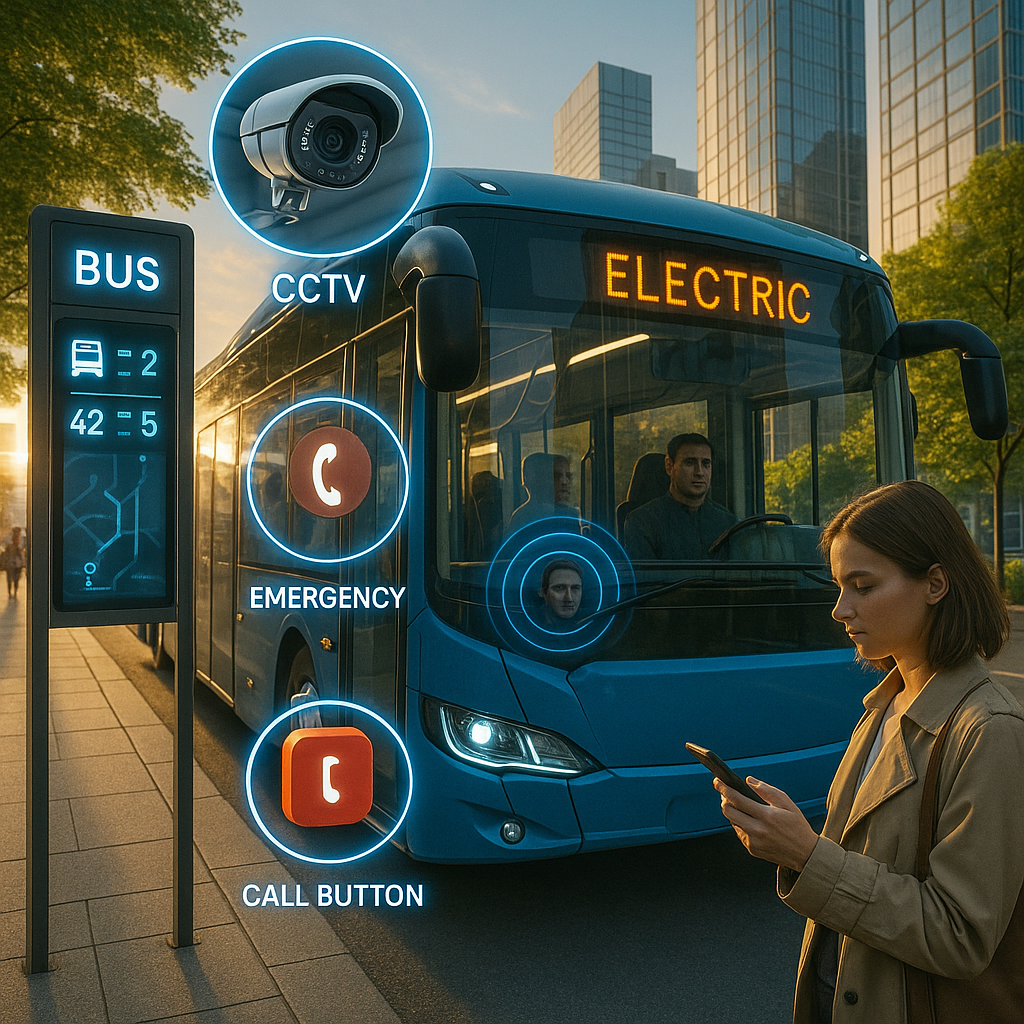How Technology Is Making Bus Travel Safer and Smarter?

In an era where urban mobility is increasingly subjected to pressure from rising population, traffic congestion, and environmental concerns, technology is revolutionising how we commute. Among all the sectors that have undergone a complete transformation, public bus transport stands out as one. Once slow, unsafe, and unreliable in most of the globe, bus systems are today transforming themselves into intelligent, responsive, and safer networks, thanks to the incorporation of newer technology. Let's see how these developments are transforming bus travel, not only smarter but also much safer.
- Real-Time Monitoring and Passenger Information Systems
One of the most apparent changes in bus travel is real-time GPS tracking. Riders can now use smartphone apps to know exactly when a bus will arrive, and waiting times are reduced, and the unpredictability that goes with public transportation is reduced. For transport agencies, it helps in fleet tracking, coordinating delays, and route planning.
- Intelligent Transport Management Systems (ITMS)
ITMS is the key to intelligent bus travel. With GPS, traffic signal control, and analytics combined, ITMS reduces delay and routing. Bus priority at the intersection can be offered to bypass stops, and bus timetables can be best revised in real-time by route planners based on streams of traffic. Apart from enhancing efficiency, these smart systems reduce fuel usage and emissions too.
- AI-Driven Safety Monitoring
Artificial intelligence is helping to monitor safety like never before. Onboard sensors and cameras driven by AI can detect driver fatigue, distracted driving, or risky habits. Some systems warn the driver in real time and alert the control centre, should intervention be necessary. AI can even monitor passengers, reporting instances of overcrowding or unusual incidents automatically, ensuring buses are safer for everybody.
- Contactless Payments and Mobile Ticketing
Those are the days of fighting over cash or waiting in lines for hours for paper tickets. Contactless smart cards and mobile payments today make it faster to board, remove the need for human touching, and decrease physical contact, which is beneficial in a post-pandemic setting. The systems also help transit agencies gather ridership data for better planning and the best possible utilization of resources.
- Emergency Alert Systems and Panic Buttons
A few of the buses today are equipped with emergency communication technology, including panic buttons for passengers as well as drivers. These can enable prompt notification to authorities in the event of an incident, threat, or occurrence of harassment. Prompt response sends immediate notifications of assistance, thereby ensuring the safety of the passengers.
- Predictive Maintenance and Vehicle Health Monitoring
With IoT sensors fitted on buses, public transportation agencies can now monitor the health of such key components as brakes, engines, and tires in real time. Predictive analysis allows advanced prediction of mechanical breakdowns, minimising roadside breakdowns, and maintaining buses in optimal condition. The preventive approach optimises safety as well as minimises maintenance costs.
- Smart Monitoring and CCTV Integration
Advanced CCTV systems are now a common facility on almost every bus. Not only are these systems able to record incidents, but also coupled with behaviour analysis and facial recognition software. Vigilant or hostile behaviour will bring on a warning, permitting the transit authorities or police to move swiftly. Close surveillance is a handy deterrent and a precious aid in clearing incidents.
- Eco-Friendly and Quieter Performance
While not necessarily safety-focused, the trend toward hybrid and electric buses improves comfort for passengers and reduces noise. These buses are quieter, which makes for a more comfortable city living environment. In the case of an emergency, quieter buses also help pedestrians to hear alarms or instructions.
- Driver Assistance Systems
Public transport buses are being outfitted with ADAS such as lane-keeping assistance, collision alert, and autonomous braking. They also prevent accidents, particularly in a chaotic or heavy traffic situation. On top of regular training and monitoring, drivers are now well equipped to navigate heavy urban situations in a secure way.
- Enhanced School Bus Safety through Geo-Fencing
For school buses, geo-fencing technology allows them to operate pre-planned safe routes. Parents are also notified when the bus reaches every stop, and unauthorised delay or deviation can be notified in real-time. It adds more control and assurances of the daily transport of children to caregivers and school management.
Conclusion:
Whether daily commuter, anxious parent, or urban planner, one thing is sure - bus riding is no longer just a matter of point A to point B. It's about how it's done safely, sensibly, and responsibly.
We at Arena Softwares are powering the future of bus travel with intelligent, secure, and eco-friendly solutions. From live tracking to AI monitoring, our technology enhances the lives of every commuter, parent, and planner. As cities expand, intelligent mobility is not an option; it's a requirement. With Arena, the journey stays on wheels, but its energy goes entirely digital. Contact Arena Softwares today to discover more about the role of technology in bus travel.
